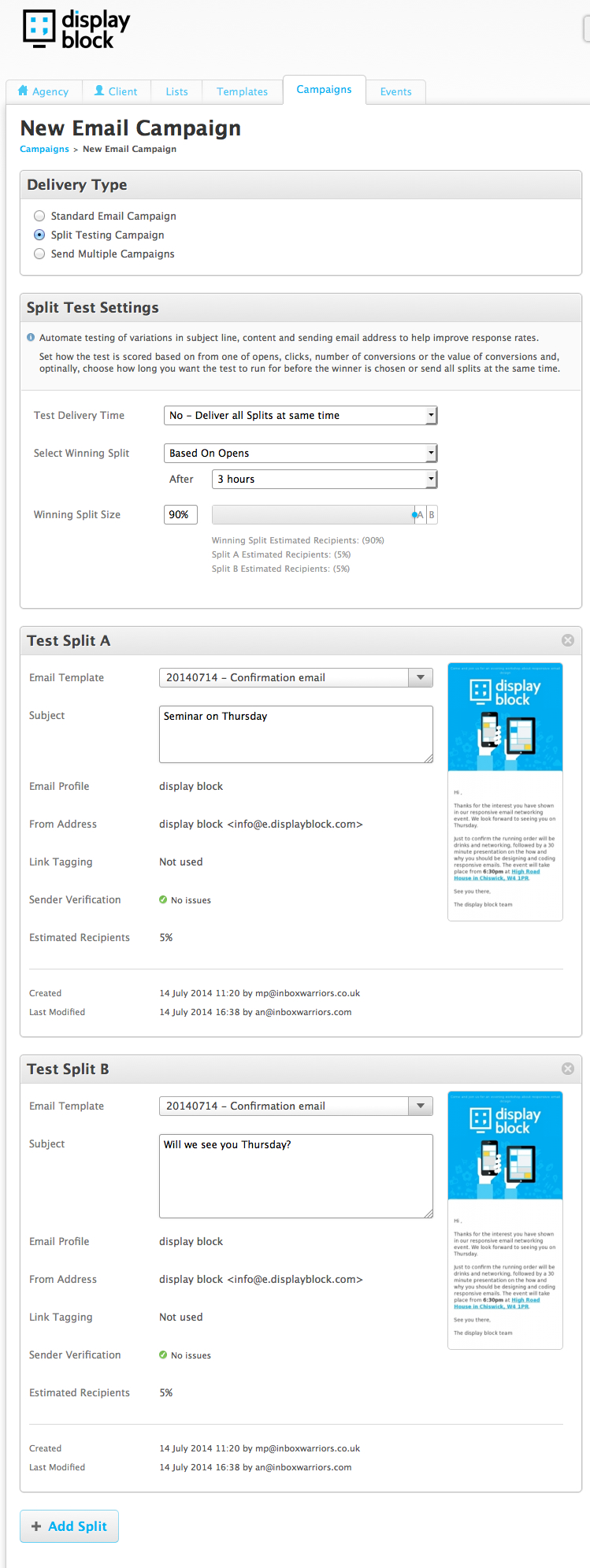
With the subject line being the main driver for getting emails opened, it’s important to understand what makes people open emails.
This does, of course, vary based on what message you are trying to get across in your email, how you segment your list and mailing frequency but there are approaches that can be used pretty much everywhere.
Short and sweet
Being succinct is the first thing to try and achieve, especially so now that so few characters can be viewed on a smartphone. We see between 33 and 72 characters on a smartphone depending on the device and whether it’s viewed portrait or landscape, but aim for the lower end as this covers you for the smaller screens (such as the iPhone) and for portrait viewing as this is how most of us use our ‘phones.
This is where the pre-header can save the day. It can be used as an extension of the subject line and can get you another 60 characters or more to get the message across.
The other reason to keep subject lines short and informative is we are all more impatient now and are also likely to be viewing emails where we are surrounded by distraction. We need to know exactly what the email will be about before devoting time to reading it. The time you have to make an impression is around three seconds.
What about creativity?
There are some exceptions of course. If you know your customers well and have historically high engagement rates then you can experiment a little. The creative marketers out there love to craft subject lines with humour or that are puzzling in some way so as to stand out from the crowd and tempt us into opening the email to find out more.
The beauty of email is that you can test to your hearts content – coming up with at least two subject lines for every email campaign and testing to a small segment of your list to see which produces the most opens should be a default practice. If you can come up with four, better still as it accelerates the learning process.
From the start, you should be recording everything. Which subject line went to which data set and what was the creative treatment and offer? Start to build up a library of what worked well and what didn’t. Over time you will start to see patterns of words and phrases that give better results and you can add variations of these to your library and a apply a scoring system.
The eyes have it
Research shows that numbers tend to grab our attention – ’10 tips for great subject lines’ for example. Icons in the subject line are increasingly common – stars, tiny aeroplanes, love hearts – we’ve all seen them, but they stand out and so draw our eyes. Single word subject lines also attract attention – ‘Sale’ is always eye catching and if we know and trust the brand in the sender line we’re likely to open the email. ‘Panic’ is one of many emotive words and makes you wonder what you should be panicking about so you open the email to find out.
It’s all about me! Isn’t it?
Clever personalisation is an under-utilised way of capturing attention – not by adding in a persons name, no-one thinks that’s clever these days and it just uses up valuable character space. Personalise a subject line with something that will appeal to a sub-set of your list – previous purchases, something based on where they live, something they have clicked on before or viewed on your website.
Punctuation stands out too – exclamation marks, whilst eye catching, tend to be off-putting as they are associated with humour or something incredible and ‘The best deals!’ aren’t either of these things. Question marks work better – just make sure you’re asking the right question.
Triple A (or B, or C…)
Alliteration can work well – ‘Top Training Tips To Try Today’ – although coming up with enough of these whilst maintaining relevance to the email is an art.
Ask me early
Try adding in a call to action – it can be particularly powerful when combined with a sense of urgency – ’Our 24 hour sale has started – GO!’. Whilst usually seen as a button in the email itself, the emotive impact is the same and can encourage more opens.
Talk the talk
An increasing number of companies are employing a more conversational tone, both on their websites and in emails. It has developed into ‘Clickbait’ which, as the name implies, is content designed to encourage more clicks such as:
- An eye-catching and compelling headline
- Easily skimmable content
- Funny or memorable images/video
- A humorous tone, or something which appeals strongly to a specific emotion
- Content to encourage social sharing
This practice is extending into subject lines as marketers realise the importance of both a more relaxed conversational tone and targeting emotional triggers – a tactic social marketers have been using for some time.
Finally, it should be remembered that our lists of email addresses have real people behind them and real people aren’t stupid, in fact, we are becoming increasingly aware, fragmented and sophisticated in our use of all things Internet.
Oh, and never lose sight of the job the subject line is designed to do; to get people to open the email. Then it’s job is done.


